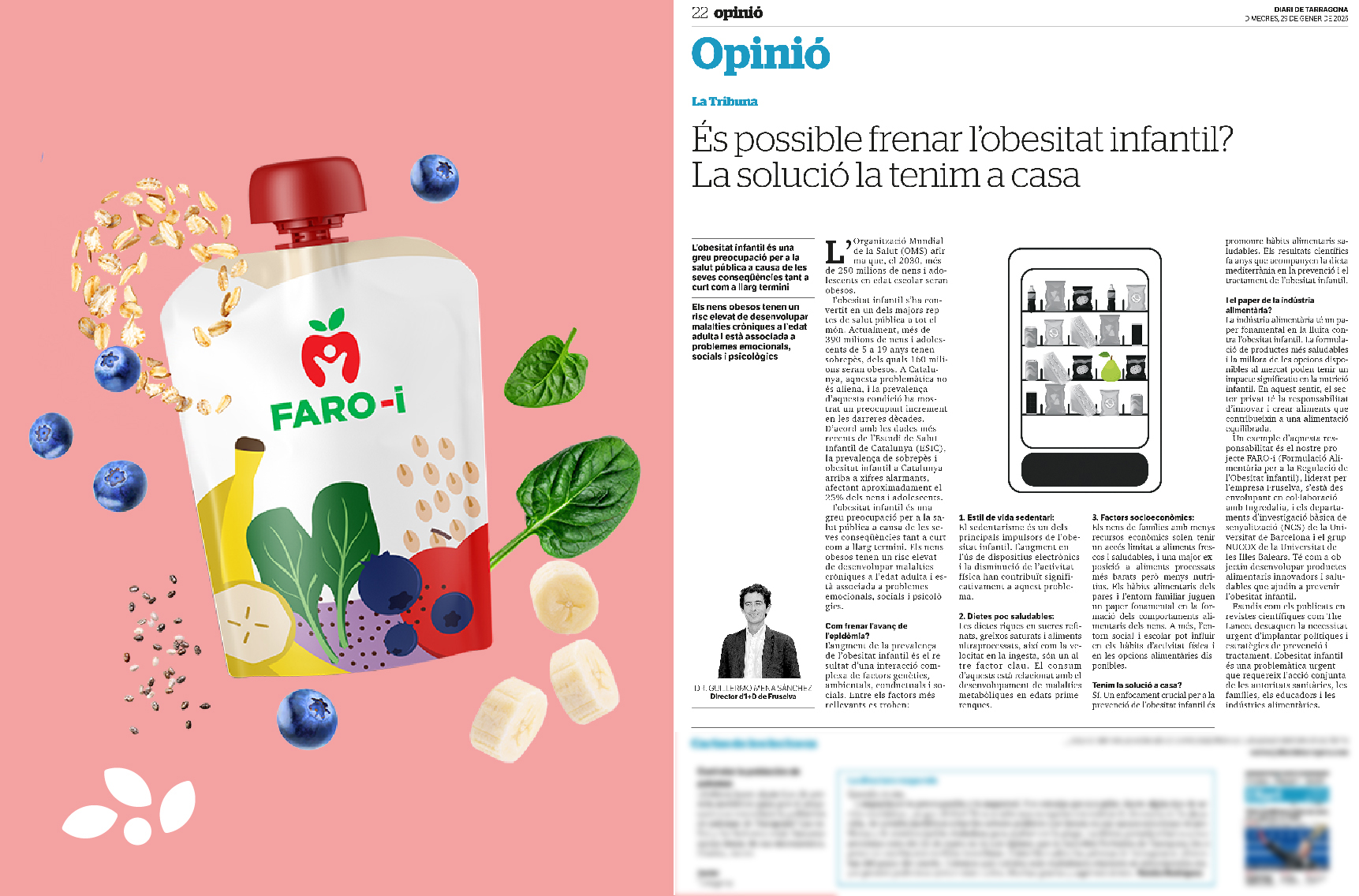Diari de Tarragona published last Wednesday, January 29, an opinion article by Dr. Guillermo Mena Sánchez, director of R&D at Fruselva:
Is it possible to stop childhood obesity? The solution is at home
The World Health Organization (WHO) states that by 2030, more than 250 million school-age children and adolescents will be obese.
Childhood obesity has become one of the greatest public health challenges worldwide. Currently, more than 390 million children and adolescents aged 5 to 19 have overweight, with 160 million being obese. In Catalonia, this issue is not foreign, and the prevalence of this condition has shown a concerning increase in recent decades. According to the latest data from the Child Health Study of Catalonia (ESIC), the prevalence of overweight and childhood obesity in Catalonia reaches alarming numbers, affecting approximately 25% of children and adolescents.
Childhood obesity is a major public health concern due to its consequences both in the short and long term. Obese children are at a higher risk of developing chronic diseases in adulthood and are associated with emotional, social, and psychological problems.
How to stop the epidemic’s advance?
The increase in the prevalence of childhood obesity results from a complex interaction of genetic, environmental, behavioral, and social factors. Among the most relevant factors are:
- Sedentary lifestyle: Sedentary behavior is one of the main drivers of childhood obesity. The increase in the use of electronic devices and the decrease in physical activity have significantly contributed to this problem.
- Unhealthy diets: Diets rich in refined sugars, saturated fats, and ultra-processed foods, as well as the speed of consumption, are another key factor. Consumption of these is related to the development of metabolic diseases at early ages.
- Socioeconomic factors:Children from families with fewer economic resources often have limited access to fresh and healthy foods and are more exposed to processed foods that are cheaper but less nutritious. Parents’ eating habits and the family environment play a key role in shaping children’s eating behaviors. Additionally, the social and school environment can influence physical activity habits and the available food choices.
Do we have the solution at home?
Yes. A crucial approach to preventing childhood obesity is promoting healthy eating habits. Scientific results have long supported the Mediterranean diet in preventing and treating childhood obesity.
And the role of the food industry?
The food industry plays a crucial role in the fight against childhood obesity. The formulation of healthier products and improving available market options can have a significant impact on child nutrition. In this regard, the private sector has the responsibility to innovate and create foods that contribute to a balanced diet.
An example of this responsibility is our FARO-i project (Food Formulation for the Regulation of Childhood Obesity), led by the company Fruselva, which is being developed in collaboration with Ingredalia and the basic signaling research departments (NCS) of the University of Barcelona and the NUCOX group of the University of the Balearic Islands. Its aim is to develop innovative and healthy food products that help prevent childhood obesity.
Studies published in scientific journals such as The Lancet highlight the urgent need to implement policies and strategies for prevention and treatment. Childhood obesity is an urgent issue that requires the joint action of health authorities, families, educators, and the food industry.



